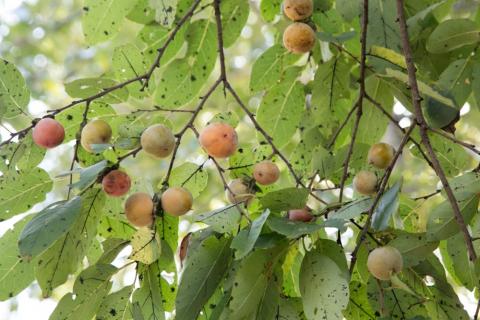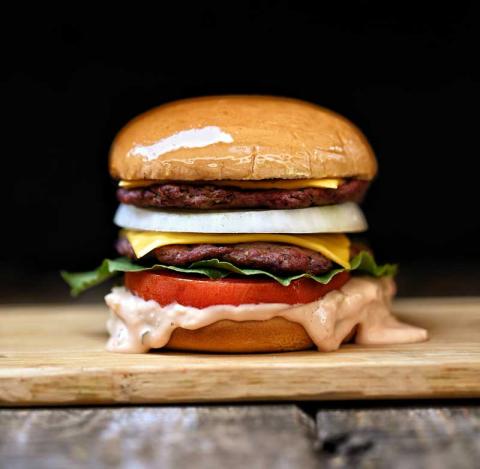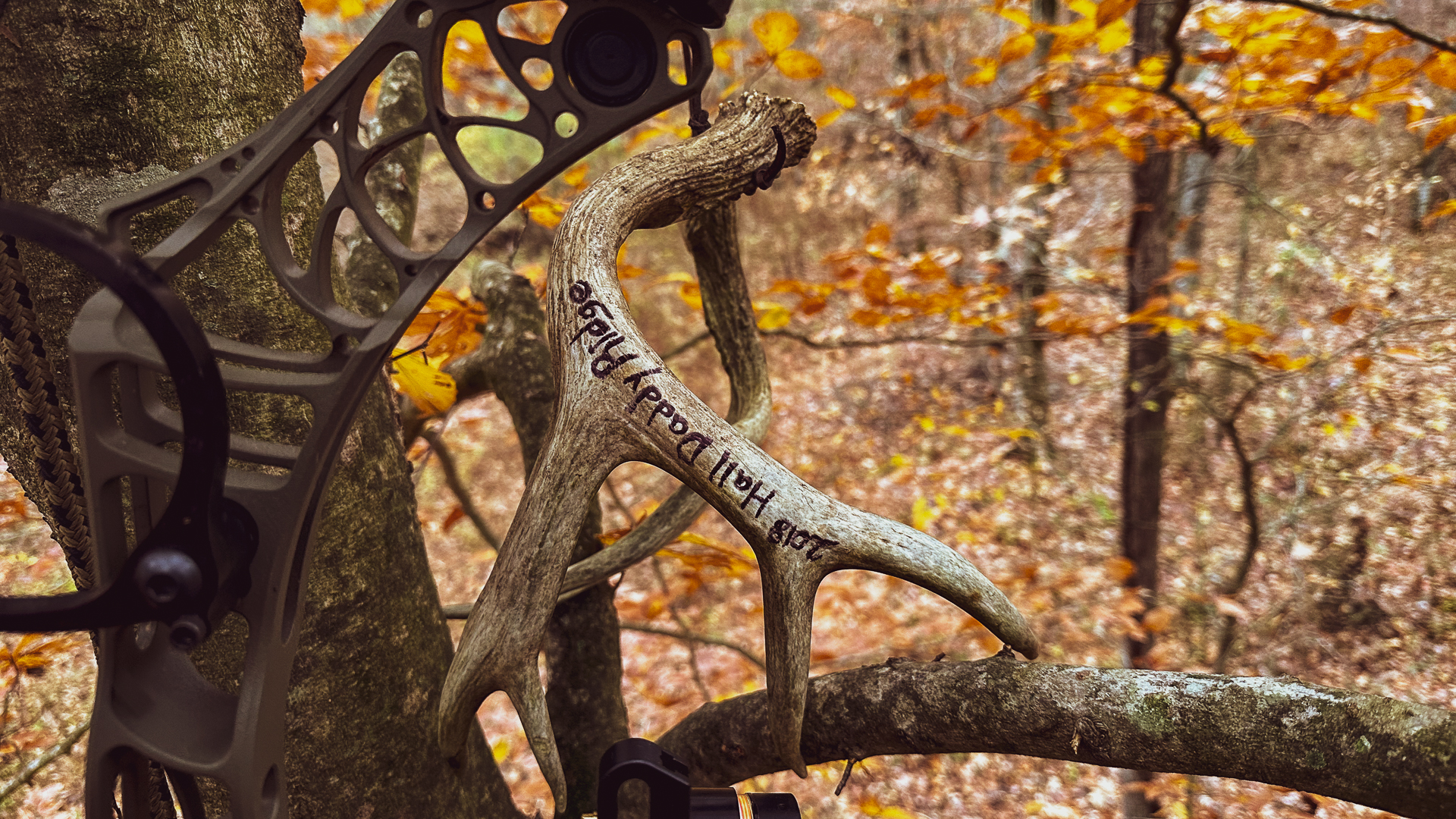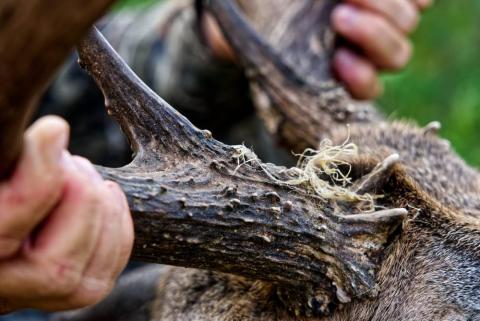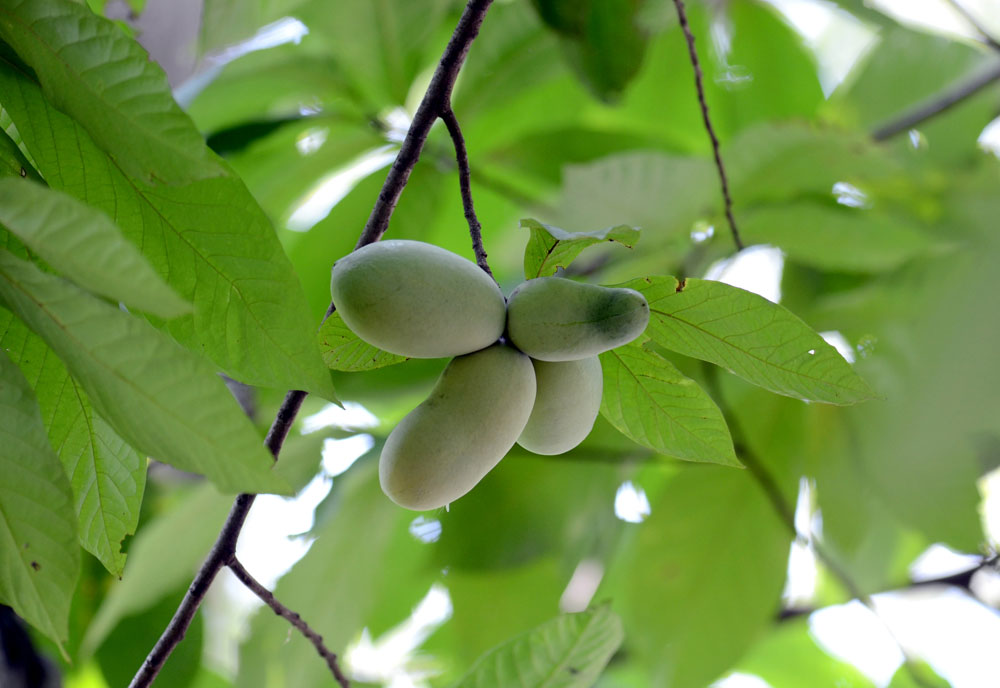
Where to Find Paw Paws
You can find the Paw-Paw tree in the eastern, southern, and midwestern states of the United States and southern Canada. Imagine an oval line reaching from Nebraska to southern Ontario, around New York and down to Florida, over to East Texas and back up to Nebraska; you have just circled the regions where the Paw-Paw tree can be found.
You can find Paw-Paw trees in low-lying areas close to creeks and streams. They grow in well-drained areas and flourish in full sun or partial shade. Young Paw-Paw trees seem to grow well in partial shade and can provide excellent cover for wildlife. They grow in clusters or colonies. Where you find one, you will find many more.
What is a Paw Paw Tree?
The Paw-Paw is the largest fruit tree native to the United States and can grow to 35 feet. It is also the only member of the tropical Annonaceous family found here.
The Paw-Paw tree’s leaves are long, thin and flat. The flower is a maroon blossom that appears in April and May. It is a small maroon and purple bell-shaped blossom about an inch across. It has a slight odor, similar to that of rotten meat. The odor attracts blowflies, beetles and other insects that aid in pollination.
On average, the fruit of the Paw-Paw is the size of your fist and resembles a pear. It is green and, after it falls, it turns yellow and eventually black spots will appear. You will notice the fruit ripens in mid-August and September. The fruit on the ground often attracts ants as it ripens. The fruit does have seeds, much like that of the persimmon.
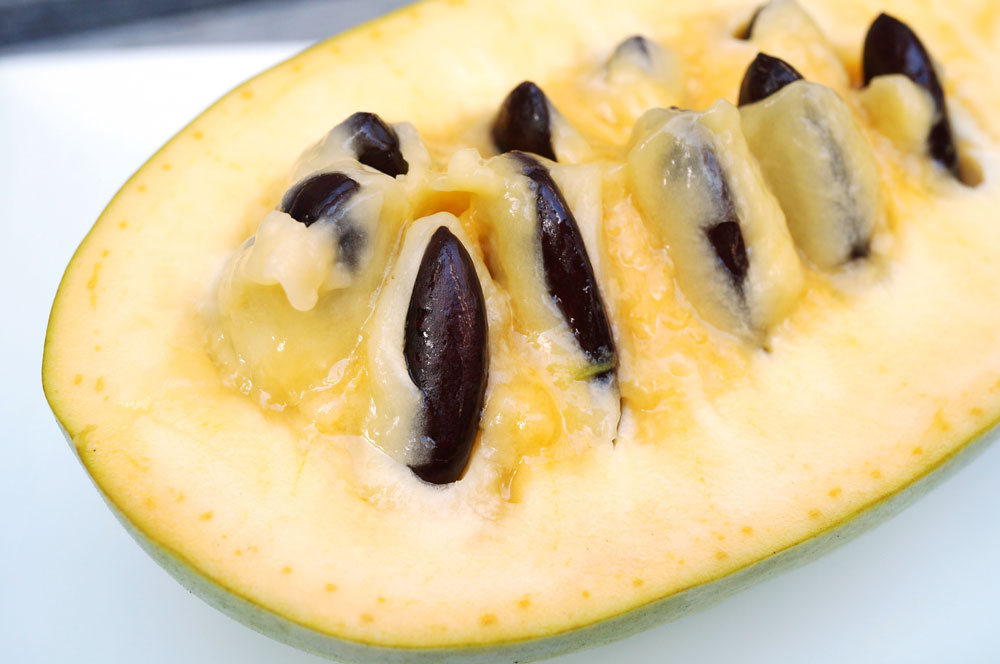
Since the Paw-Paw fruit on the ground is so sweet, it quickly attracts insects. When you shake the tree, green fruit will stay attached to the tree, and ripe fruit will fall and be void of ants for a time. The fruit is best to eat when it is mushy. If you squeeze it and it’s still hard, it is still green and does not taste good. If you squeeze it and it’s mushy like a mango might be, it will taste great. The taste is much like a combo of mango and banana.
The Paw-Paw fruit is a favorite of local wildlife. If you live in bear country, you probably already know that. Wildlife loves the sweet-tasting fruit; they also benefit from the nutrition it provides. It is considered more nutritious than wild grapes, peaches and even apples. It is high in amino acids, vitamins and minerals. Of course, the sweet fruit is also high in calories.
Interesting History
These "hillbilly banana"s have been a favorite of Native Americans for centuries. The Iroquois would mash the Paw-Paw into flat cakes and dry them to use later. Often, they soaked the dried cakes in water to make different dressings and condiments.
By shaving off the bark and twisting it, the Cherokee would make ropes and twine. Both the Iroquois and Cherokee enjoyed eating the Paw-Paw fruit. Even George Washington enjoyed the Paw-Paw fruit. It is said his favorite dessert was chilled Paw-Paw. Thomas Jefferson enjoyed the fruit and planted Paw-Paw trees around his Monticello home.
Much like Thomas Jefferson, many will plant Paw-Paw trees around their home. They are easy to grow and require little maintenance. The Annonaceous acetogenins or natural insecticide of the tree keeps most harmful insects away. It is also used to make a natural insecticide and is useful in the fight against cancer. Universities like the University of Kentucky continue to study the many benefits of the Paw-Paw tree.

















